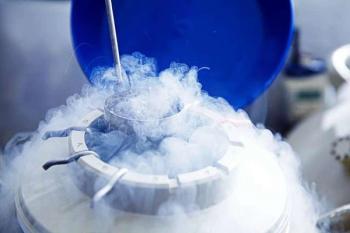
Organic pollutants and endometriosis
Women exposed to pesticides containing trans-nonachlor were 3.38 times more likely to develop endometriosis (P <0.0001), and for PCB 114 the increased risk was 1.83 (P =0.009).
A pilot clinical study conducted in France has found that certain persistent organic pollutants (POPs) significantly increase the risk of endometriosis, including pesticides containing trans-nonachlor, as well as polychlorinated biphenyl (PCB) 114.
“Humans are exposed daily to complex mixtures of chemical pollutants through their environment and diet, some of which have the potential to disrupt the body’s natural endocrine functions and contribute to reproductive diseases like endometriosis,” wrote the authors in the journal Environment International.1
The purpose of the study was to validate the methodology and potential of integrating ultra-trace mass spectrometry (MS) profiling of POP biomarkers and endogenous biomarker profiling (MS metabolomics and cytokines) in a case-control study for the etiological research of endometriosis.
The study recruited 87 adult women, aged 18 to 45, from the University Hospital of Nantes, France, between 2018 and 2019. Participants sought surgical intervention for deep endometriosis without endometrioma (noOMA) (n = 26); deep endometriosis with endometrioma (OMA) (n = 49); or other benign reproductive concerns not related to endometriosis (controls) (n = 12).
Serum samples were analyzed with high-resolution MS for about 30 PCBs, organochlorinated pesticides and perfluoroalkyl substances (PFAS).
Roughly 600 serum metabolites andlipids were identified with targeted metabolomics using tandem MS with the Biocrates MxP Quant 500 Kit, whereas a panel of 4 proinflammatory cytokines were evaluated via an ELISA-based 4-PLEX analyzer.
Bayesian kernel machine regressions (BKMR) identified mixture effects of POPs and a multiblock approach to identify shared biomarker signatures among high risk clusters.
Women exposed to pesticides containing trans-nonachlor were 3.38 times more likely to develop endometriosis (P <0.0001), and for PCB 114 the increased risk was 1.83 (P =0.009).
The 2 endometriosis groups had significantly larger levels of PCB 157, sum of toxic equivalents (TEQ) PCBs, and pesticides containing trans-nonachlor (P < 0.001), compared to the control group.
With BKMR, the mixture tended to have a positive cumulative effect, but trans-nonachlor showed significant associations within the mixture and interacted with other PCBs, thus strengthening the effects at highest concentrations.
In addition, the multiblock analysis, which combined the various blocks of data, disclosed a latent cluster of women with higher risk of endometrioma who presented with higher concentrations of trans-nonachlor, PCB 114 and dioxin-like TEQs from PCBs, coupled with an increased inflammatory profile, such as elevated interleukin-8 (IL-8) and monocyte chemoattractant protein-1.
Inflammatory cytokines were more prominently linked to OMA than to the combined group of controls and noOMA.
The study also found a specific metabolic pattern characterized by dysregulation of bile acid homeostasis and lipase activity.
“The contribution of each individual chemical from a complex mixture of endocrine-disrupting chemicals becomes elusive in current observational research methods; however, it is likely that complex interactions may occur, especially in light of reported synergistic interactions between endogenous oestrogen (and oestrogenic chemicals) on endometriosis progression,” wrote the authors.
One study limitation is the modest statistical power, due to the small sample size and the cross-sectional design.
The authors noted that further research with a larger sample size is needed to confirm their findings and better understand the underlying mechanisms between POPs and endometriosis.
Reference
- Matta K, Lefebvre T, Vigneau E, et al. Associations between persistent organic pollutants and endometriosis: a multiblock approach integrating metabolic and cytokine profiling. Environ Int. Published online October 11, 2021. doi:org/10/1016/j.envint.2021.106926
Newsletter
Get the latest clinical updates, case studies, and expert commentary in obstetric and gynecologic care. Sign up now to stay informed.
















